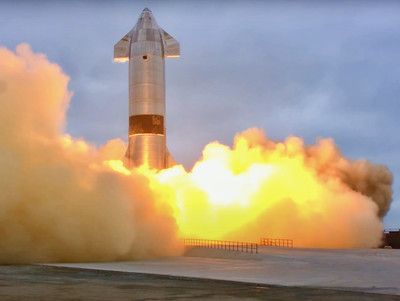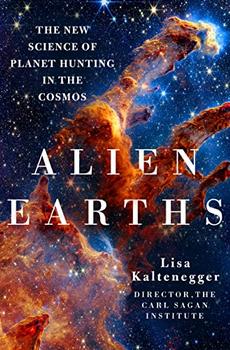Summary | Excerpt | Reviews | Beyond the Book | Read-Alikes | Genres & Themes | Author Bio

 Book Reviewed by:
Book Reviewed by:
David Bahia
Buy This Book
This article relates to Alone Out Here
 From the first description of its maiden launch in the year 2072, the fictional Lazarus is more than just a spaceship in Riley Redgate's Alone Out Here. It is a cryogenic ark filled with extensive samples of Earth's faunal DNA, and an integrated archive for preserving a cross-section of humanity's archaeological treasures. Moreover, the Lazarus is a monumental engineering wonder. Built at a scale we have yet to see outside of science fiction, the ship can house 900 times the passengers that SpaceX's Starship prototype can. Its outer shields are designed to weather over a millennium of galactic cosmic rays and the frequent micro-impacts of space dust hurtling up to 6,700 miles per hour. The life support systems inside form an integral ecosystem complete with an agricultural bay and built-in water treatment plant. While it remains to be seen what the next 50 years will hold for interplanetary travel, Redgate's vision of the Lazarus considers the contemporary challenges we face to make crewed spaceflight a reality.
From the first description of its maiden launch in the year 2072, the fictional Lazarus is more than just a spaceship in Riley Redgate's Alone Out Here. It is a cryogenic ark filled with extensive samples of Earth's faunal DNA, and an integrated archive for preserving a cross-section of humanity's archaeological treasures. Moreover, the Lazarus is a monumental engineering wonder. Built at a scale we have yet to see outside of science fiction, the ship can house 900 times the passengers that SpaceX's Starship prototype can. Its outer shields are designed to weather over a millennium of galactic cosmic rays and the frequent micro-impacts of space dust hurtling up to 6,700 miles per hour. The life support systems inside form an integral ecosystem complete with an agricultural bay and built-in water treatment plant. While it remains to be seen what the next 50 years will hold for interplanetary travel, Redgate's vision of the Lazarus considers the contemporary challenges we face to make crewed spaceflight a reality.
According to NASA (the National Aeronautics and Space Administration), there are five technologies essential to deep space travel. One is an effective air filtering system to recycle carbon dioxide into oxygen and remove moisture from the air. High humidity can be especially problematic as it causes the human body to overheat, heightens the spread of bacteria and other microorganisms and may lead to damaged equipment due to condensation. In Alone Out Here, the main character Leigh laments that the Lazarus's recycled air has made everyone "dry-skinned" and "spotty." Such is the unglamorous price, it would seem, of long-term living on a spaceship.
Equally indispensable is a working method of propulsion. Not only are engines crucial to maneuvering through space, but they must be powerful enough to clear the gravitational orbit of Earth and other planets. The Lazarus could possess a configuration pattern like SpaceX's Starship, which is now set to feature nine powerful methane combustion Raptor engines, along with 33 additional engines on its detachable booster stage rocket. The booster stage is necessary to help escape Earth's gravitational pull. Like Starship, the Lazarus cannot break free of Earth's gravity on its own.
Next on NASA's checklist is a reliable heat shield. Atmospheric entry into Earth can be toasty at around 5,000º F (2,800º C), but the shield must also protect the crew during spaceflight from direct exposure to sunlight, which can heat the ship's exterior up to 550º F (288º C). In Alone Out Here, the Lazarus sets course for an exoplanet located in the Alpha Centauri system's "habitable zone" — defined by NASA as any distance between a star and its orbiting planet(s) that is suitable for the presence of planetary surface water. As no currently known planet is identical to Earth, the Lazarus engineers would have likely designed a heat shield to endure a range of atmospheric temperatures potentially hotter or colder than Earth.
Another type of shielding the crew needs is for protection from space radiation. Most humans are normally exposed to just over two millisieverts (mSv) of radiation, well below the immediate risk of cancer posed at around 100 mSv. Outside Earth's protective magnetic field, however, radiation levels reach at least 600 mSv. Alone Out Here describes in one chapter how a small team of teenagers are drafted for long-term comprehensive medical training in preparation for the inevitability of medical emergencies, including gastrointestinal infections and cardiovascular failure known to occur from acute radiation syndrome. This urgent demand for trained human doctors underscores the lack of automated medical technologies aboard the Lazarus with the sophistication to independently diagnose and treat illnesses.
Finally, NASA emphasizes the importance of having onboard backup systems for communication and navigation. Communication happens to be the one pressing disadvantage for the Lazarus, if only because no one on Earth is responding to its hails. Without the benefit of navigational guidance from Earth's mission control, it is likely that the Lazarus is equipped with at least a back-up optical navigation system, which can triangulate the ship's position using photos it takes of planets and the surrounding constellations. If even that fails, the International Space Station at present has been assessing the use of handheld sextants to perform manual sightings through the window, not unlike the sailors of old.
Based on these criteria, the setting of Alone Out Here five decades in the future realistically highlights the current advances and limitations of spaceflight technology in 2022, while imagining what the future might hold.
SpaceX Starship SN15 test flight. Photo by Steve Jurvetson (CC BY 2.0)
Filed under Medicine, Science and Tech
![]() This article relates to Alone Out Here.
It first ran in the May 18, 2022
issue of BookBrowse Recommends.
This article relates to Alone Out Here.
It first ran in the May 18, 2022
issue of BookBrowse Recommends.




Failure is the condiment that gives success its flavor
Click Here to find out who said this, as well as discovering other famous literary quotes!
Your guide toexceptional books
BookBrowse seeks out and recommends the best in contemporary fiction and nonfiction—books that not only engage and entertain but also deepen our understanding of ourselves and the world around us.